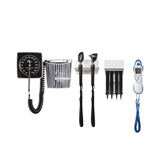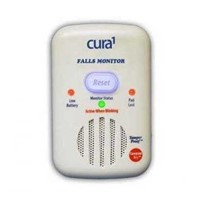Effective infection prevention and control practices can reduce the risk of infection transmission between patients, healthcare workers and others in the healthcare environment; they are an essential component of safe, quality health care.
Infection prevention and control aims to reduce the risk of patients acquiring preventable healthcare-associated infections. Infectious agents transmitted during the provision of health care come primarily from interaction with other people – patients, clinicians and visitors.
A successful infection prevention and control program requires prompt identification of individuals presenting with, or with risk factors for, infection or colonisation. This may be in relation to an organism of local, national or global significance, where the need to put in place appropriate measures to prevent the spread of the infectious agent to other individuals, is essential.
Why Is Infection Prevention And Control Important?
Infection can occur when pathogens (‘germs’) such as bacteria, viruses, protozoa or fungi get into or onto the body. Every year, a large number of Australians suffer from infections which require medical attention. Infection prevention and control practices aim to prevent and/or stop the spread of disease-causing germs to others.
Australian Guidelines for the Prevention and Control of Infection in Healthcare (2019)
- “There are over 165,000 healthcare associated infections in Australian acute healthcare facilities every year. This makes healthcare associated infections the most common complication affecting patients in hospital.”
There are over 165,000 healthcare associated infections in Australian acute healthcare facilities every year. This makes healthcare associated infections the most common complication affecting patients in hospital. But this problem does not just affect patients and workers in hospitals — healthcare associated infections can occur in any healthcare setting, including office-based practices (e.g. general practice clinics, dental clinics, community health facilities), the setting in which paramedics work and long-term care facilities.
Effective infection prevention and control is central to providing high quality healthcare for patients and a safe working environment for those who work in healthcare settings. The Australian Guidelines for the Prevention and Control of Infection in Healthcare provide evidence-based recommendations that outline the critical aspects of infection prevention and control, focusing on core principles and priority areas for action.
The guidelines are for use by all working in healthcare – including healthcare workers, management and support staff. They provide a risk-management framework to ensure the basic principles of infection prevention and control can be applied to a wide range of healthcare settings. The level of risk may differ in different types of healthcare facilities; risk assessments are encouraged as part of the decision making and use of guideline recommendations.
When implementing these recommendations all healthcare facilities need to consider the risk of transmission of infection and implement according to their specific setting and circumstances.
The Infection Control Guidelines Advisory Committee (ICGAC) provided expertise during the guideline development process.
Healthcare-Associated Infection Is Preventable
HAIs are infections acquired as a direct or indirect result of healthcare. In Australian acute healthcare facilities, there are around 165,000 HAIs each year. This makes HAIs the most common complication affecting patients in hospital. HAIs can occur in any healthcare setting, including office-based practices (e.g. general practice clinics, dental clinics, community health facilities), the settings in which paramedics work and long-term care facilities.
These infections are caused by infectious agents such as bacteria and viruses. They are potentially preventable adverse events rather than unpredictable complications. Any person working in or entering a healthcare facility is at risk of transmitting infection or being infected.
Effective infection prevention and control strategies can significantly reduce the incidence of HAI.











-205x205.jpg)











